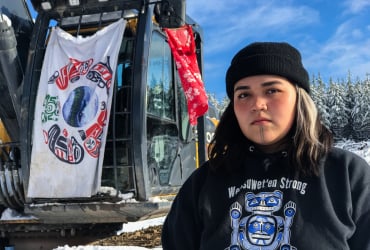Try to remember the last time you did a connect the dots puzzle. You were probably a kid.
Crayon in hand, you look at the page and see a seemingly random scattering of dots that are unrelated to each other. By faith, press the colored wax on the number 1, drawing lines in numbered sequence. Slowly but surely, an image emerges.
Today’s adults are invited to continue having fun with these activities. Marketing arguments for connect the dots puzzles for adults argue that exercise increases your problem-solving skills, allowing you to be an advanced and innovative thinker. We think those game promoters are onto something.
Too often, we fail to resolve critical issues by not seeing the big picture. We suffer from siled thinking, viewing variables as independent rather than interdependent and fundamentally connected.
To address this deficiency, evidenced by viewing climate change, toxic exposures, and environmental racism as separate phenomena, it’s time to get our crayons out, connect the dots, and show the bigger picture of planetary health.
The lancet manifesto for public health it paints a picture of planetary health by pointing out the need for action at all levels of society. The manifesto aims to transform public health through collective action. The vision is “a planet that nourishes and sustains the diversity of life with which we live and on which we depend.” It prescribes a broad action of the social movement from the personal level to the community, national, regional, global and planetary level.
The planetary framework for thought and action is like a connecting-the-dots puzzle, linking the health of the planet with human health. Understanding positive health outcomes as a result of shared responsibilities within a global context requires governance that has the ability to address multiple problems with interconnected solutions.
What people are reading

The climate emergency demands solutions through swift actions. Governments must dramatically reduce CO2 and greenhouse gas emissions through integrated policy measures. Emission reductions are partly actionable by ending investments and subsidies for fossil fuel production, reported at $ 78 billion around the world last year.
And where are some of the dots that people need to connect to get a clearer picture of the threat posed by the climate crisis?
Oil and gas: COP26 news that Canada joined international commitments to end fossil fuel financing by the end of 2022 It’s welcome. Like the Quebec alliance to phase out oil and gas production. More than 30,000 people signed a petition to the Trudeau government to end the export of thermal coal, which is associated with asthma, cancer, brain damage and premature death. Another bold move would be ban fossil fuel advertising.
Opinion: To address climate change, toxic exposures, and environmental racism, it’s time to put our crayons down, connect the dots, and bring the big picture of planetary health into view, write @ JANEMCARTHUR11 and @anjalih. #Climate crisis #health
Plastic: Connecting the dots, we see that plastics and oil are the same industry. According to a report of the European Environment Agency, Plastics and other petrochemicals will be the biggest driver of oil demand growth, using the most energy globally and creating significant amounts of CO2 emissions. Tagged as the new coal, plastics contribute to the damage already suffered by vulnerable populations, including children, women, and indigenous and racialized peoples. To address the disproportionate devastation created by fossil fuel companies in the largest emitting nations, environmental justice advocates, including Vanessa Nakate of Uganda, ask for laws “who pollutes pays. ”
A stronger Canadian Environmental Protection Act (CEPA): Plastics were recently listed as toxic in CEPA. This has great potential given Oil majors have their future financial hopes pinned on plastics. A continued decline in the plastics industry is expected, as CEPA will be a tool that the government can use to control and regulate plastics with significant implications for the activity of the petrochemical industry.
the CEPA’s main purpose is to contribute to sustainable development through pollution prevention and to provide the legislative basis for a variety of federal health and environmental protection programs, including activities related to air and water pollution, hazardous waste, toxic substances , and is the primary legislation for Emissions of greenhouse gases.
Problematically, CEPA, the cornerstone of Canada’s environmental law, is severely out of date, last amended in 1999, and in dire straits. need for reform. To address climate change, toxics and ecological injustices, we need the government to present a robust bill to reform CEPA and work to pass it by the summer of 2022.
We cannot allow our communities to be used as science labs. Governments must take the approach that progress on climate and environmental health, economies and justice are the same goals and can be achieved with interconnected strategies.
It is not defensible to see the solutions to these problems as incommensurable with economic “progress.” Access to a healthy environment is a human right recently declared by the UN, serving as a call to action for all nations to take bold action.
Our ability to connect these dots may be the key to our future health and our own survival.
Jane McArthur, PhD, is director of the toxic campaign for the Canadian Association of Physicians for the Environment (CAPE). A veteran community-based occupational and environmental health advocate and researcher, McArthur’s Recent thesis research was research with highly exposed female workers where breast cancer diagnoses far exceed expected rates.
Anjali Helferty is Executive Director of the Canadian Association of Physicians for the Environment. He spent much of his 20 years in leadership positions in youth climate activism in Canada and the United States. Anjali completed a master’s degree in organizational change management in 2013 and a doctorate in adult education and community development in 2020, focusing on settler climate activists and solidarity with indigenous peoples.
Reference-www.nationalobserver.com